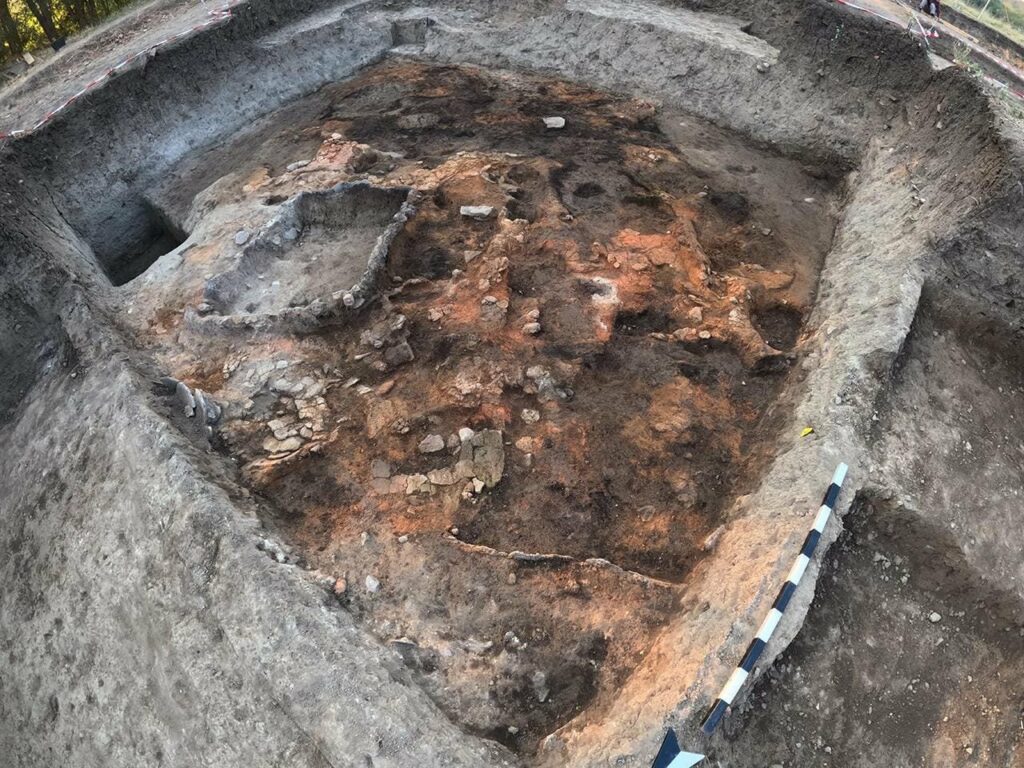The Svinjarička Čuka site during the 2024 excavations. Credit: M. Börner / ÖAI / ÖAW
The dwelling, constructed from wickerwork reinforced with wooden posts, was exceptionally well-preserved due to a fire. The partially collapsed and burned elements of the structure revealed overlapping floors, tools, and scattered vessels, both inside the house and in the outdoor area. More importantly, designated areas for food storage, such as grain and seeds, were found, indicating that these early farming communities were not merely transient but had developed a stable, sedentary lifestyle.
“Instead of small, nomadic groups or only seasonally settled communities, the Neolithic pioneers in the Balkans built stable houses with provisions for food storage,” Horejs added. This suggests a more permanent, agrarian society than previously thought, with advanced systems for grain storage and food supplies, integral to their survival and development.
The site, which has been under excavation since 2018, also holds multiple phases of settlement dating back to the early and middle Neolithic periods. This has provided researchers with a wealth of information about the Starčevo culture, believed to be the earliest Neolithic communities in the Balkans. However, new questions have also emerged from these discoveries, such as the geographic and cultural origins of these settlers and their potential interactions with local hunter-gatherer groups. “The geographical and cultural origin of these groups, as well as their possible interaction with regional hunter-gatherers, are still open questions that are now being further investigated,” said Horejs.
To further understand the significance of these findings, the research team is employing advanced microarchaeological methods. These include sediment analysis, the study of botanical and zoological remains, and chemical soil analysis. These techniques are providing new data on the use of early Neolithic houses, human-animal coexistence, and how these farming societies managed their resources.
Academia Austríaca de las Ciencias (ÖAW)
Source link : https://archaeologymag.com/2024/10/8000-year-old-dwelling-found-in-serbia/
Author :
Publish date : 2024-10-23 11:49:00
Copyright for syndicated content belongs to the linked Source.
